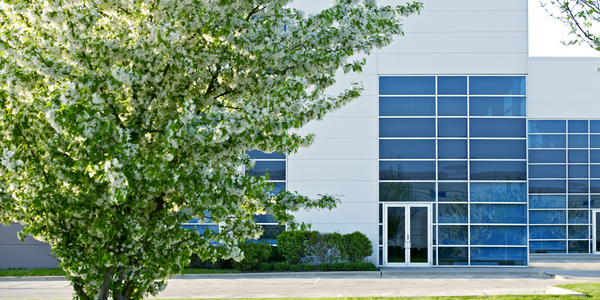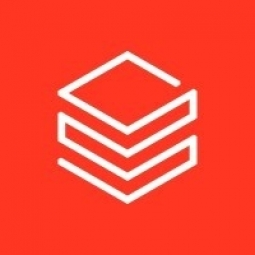Technology Category
- Functional Applications - Inventory Management Systems
- Platform as a Service (PaaS) - Application Development Platforms
Applicable Industries
- Cement
- E-Commerce
Applicable Functions
- Sales & Marketing
- Warehouse & Inventory Management
Use Cases
- Inventory Management
- Supply Chain Visibility
Services
- Testing & Certification
About The Customer
ButcherBox is an e-commerce company that operates on a subscription-based model, delivering fresh, organic, and ethically sourced meat and seafood to its customers. The company prides itself on its commitment to quality and ethical sourcing, offering products that are organic, grass-fed, free-range, crate-free, and wild-caught. As a young company, ButcherBox has to be agile and responsive to its customers' changing needs. The company has hundreds of thousands of subscribers and is constantly considering behavioral patterns, distribution center efficiency, a growing list of marketing and communication channels, and order processing systems to meet its customers' needs and expectations.
The Challenge
ButcherBox, a young e-commerce company, operates on a monthly subscription-based model, delivering fresh, organic, and ethically sourced meat and seafood to its customers. However, the company faced significant challenges due to the complexity of its operations and the vast amount of data it had to manage. The data, coming from various sources such as email systems and the company's website, was siloed, preventing complete visibility into critical insights needed for strategic and marketing decisions. The data team struggled to deliver timely and accurate reports and insights. The legacy data warehouse environment was proving to be a hindrance to the company's agility and speed, making it difficult to keep up with the changing needs of their growing customer base, improve supply chain operations, and forecast demand.
The Solution
ButcherBox addressed these challenges by deploying the Databricks Lakehouse Platform on Azure. This platform provided direct visibility into all their diverse data, including customer, inventory, and marketing impact data, and allowed the analytics team to view and export the data securely and efficiently. The Delta Lake feature provided a single source of truth for all data, enabling data engineers to build reliable data pipelines for key areas like inventory management. Databricks SQL modernized the company's data warehousing capabilities, allowing rapid data analysis at scale without worrying about infrastructure, performance, or data quality issues. The platform's collaborative nature enabled analysts to share their builds with other platform users, facilitating teamwork and streamlining the generation of insightful dashboards. The company also established an analytics Center of Excellence, with Databricks at its core, to democratize their data strategy across the company.
Operational Impact
Quantitative Benefit

Case Study missing?
Start adding your own!
Register with your work email and create a new case study profile for your business.
Related Case Studies.

Case Study
System 800xA at Indian Cement Plants
Chettinad Cement recognized that further efficiencies could be achieved in its cement manufacturing process. It looked to investing in comprehensive operational and control technologies to manage and derive productivity and energy efficiency gains from the assets on Line 2, their second plant in India.

Case Study
Digital Transformation of Atlanta Grout & Tile: An IoT Case Study
Atlanta Grout & Tile, a Tile, Stone & Grout restoration company based in Woodstock, Georgia, was facing challenges with its traditional business model. Despite steady growth over the years, the company was falling behind the web revolution and missing out on the opportunity to tap into a new consumer base. They were using independent software from different vendors for each of their department information and workforce management. This resulted in a lot of manual work on excel and the need to export/import data between different systems. This not only increased overhead costs but also slowed down their response to clients. The company also had to prepare numerous reports manually and lacked access to customer trends for effective business decision-making.

Case Study
IFFCO Boosts IT Performance and Innovates Agriculture with Oracle Cloud
Indian Farmers Fertiliser Cooperative Ltd. (IFFCO), the world’s largest manufacturer and marketer of fertilizers in the cooperative sector, was facing several challenges in its quest to innovate and improve the livelihood of farmers in India. The organization had recently launched a new product, nano urea, which brought new demands to IFFCO’s cloud computing needs. The organization needed a reliable cloud vendor to support the processes of 6–7 new manufacturing plants during the upcoming year, enhancing its production capability 300–350 million bottles of nano urea to meet increasing demand. IFFCO’s cloud adoption was driven by a need to innovate. The organization wanted capabilities for a dynamic business that can adapt to the changing needs of the market while growing fast. However, it was inhibited by rigid on-premises data center deployments and the overhead of maintaining legacy systems. IFFCO wanted to apply the elasticity and availability of cloud for improving overall performance of applications at lowest possible operational overhead. Lastly, IFFCO needed to provide the benefits of its technology to all its stakeholders, including employees, members, transporters, and farmers, some of whom have limited literacy. To accommodate all stakeholders, IFFCO wanted to add a voice interface to its applications.

Case Study
Revolutionizing Construction Equipment Rental: A Case Study on ProsRent and ENO8
ProsRent, a startup that won the 'Best Financial Opportunity' and 'Best Pitch' at CodeLaunch 2016, aimed to revolutionize the way construction professionals source and rent heavy equipment. In the construction industry, project managers and contractors typically rent heavy equipment from supply companies. However, predicting inventory can be challenging, and finding the required equipment at the right time and place can be a hassle. If the preferred vendor doesn't have the required equipment, it results in wasted time and money in searching for it, often leading to higher costs due to non-preferred rates and increased delivery costs if the vendor is located far from the job site. Suppliers, on the other hand, desired access to a wider base of trusted renters that they didn't have to vet themselves and wanted to offer dynamic rental pricing based on demand and availability in their market. ProsRent's challenge was to produce a minimum viable product that was fast and first to market but also strong enough to engender loyalty and repeat business from the target market.

Case Study
AI-based Automation for Commercial Office HVAC: A Verdigris Case Study
Modern buildings are required to run longer hours, support a variety of end uses, and contribute to higher levels of economic productivity, leaving a thin margin for error. However, even the most advanced building and environmental control systems have failed to adequately support facilities and operations management. Buildings are often inefficient and the people using them are underserved. To meet occupant comfort and maintain cost and energy efficiency, a dynamic, AI-assisted approach is needed.








